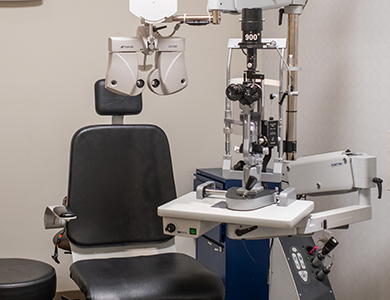
Dry eye disease occurs when your eyes don’t produce enough tears, or when the tears you do produce evaporate too quickly. Tears are essential for keeping the eyes lubricated, nourished, and comfortable. Without proper lubrication, your eyes can become irritated, red, and even more vulnerable to damage or infection over time.
What Causes Dry Eye?
Dry eye can result from a variety of factors that affect the quality or quantity of your tears. Age is one of the most common contributors - tear production naturally decreases as we get older, making the eyes more prone to dryness.
Spending long hours on digital screens can worsen dryness since we tend to blink less often when focused on computers or phones. Contact lens wearers may also experience dry eye, especially when lenses are worn for extended periods or not properly cleaned, which can disrupt the tear film and irritate the surface of the eye.
Certain medical conditions, including autoimmune disorders, hormonal changes, and the use of specific medications, can interfere with tear production and composition and further aggravate symptoms.
Another major underlying cause of dry eye is meibomian gland dysfunction (MGD). These glands, located along the eyelid margins, produce the oily layer of your tears that prevents them from evaporating too quickly. When the glands become blocked or produce poor-quality oil, it leads to instability in the tear film and increased dryness. Addressing MGD is often key to achieving lasting relief from chronic dry eye symptoms.
What You Can Do at Home
For mild cases of dry eye, a few lifestyle changes may offer relief:
• Use artificial tears to keep your eyes lubricated.
• Take regular screen breaks
• Humidify your space to add moisture to the air.
• Wear sunglasses outdoors to protect against wind and sun.
• Stay hydrated and include omega-3 fatty acids in your diet for eye health.
Common Symptoms You Shouldn’t Ignore
Dry eye often starts with subtle irritation, but if left untreated, it can cause chronic discomfort or even vision problems. Common symptoms include:
• A gritty or sandy feeling in your eyes
• Redness or burning sensation
• Watery eyes
• Blurred or fluctuating vision
• Sensitivity to light
• Mucus buildup around the eyes
• Feeling like something is constantly in your eye
If you experience these symptoms frequently, it’s important not to dismiss them as minor irritation.
When to See Your Eye Doctor
If your symptoms persist or worsen despite home remedies, it’s time to schedule an appointment. Chronic dry eye can indicate an underlying issue that requires medical treatment - such as meibomian gland dysfunction or tear film instability. At Poplar Spectacles Optometry, we use advanced diagnostic tools to pinpoint the cause of your dryness and create a personalized treatment plan to restore comfort and clarity.
Schedule Your Dry Eye Evaluation Today
Ignoring the signs of dry eye can lead to long-term discomfort and even damage to the eye’s surface. By recognizing symptoms early and seeking professional care, you can protect your vision and improve your quality of life.
If you’re struggling with burning, irritation, or blurry vision, schedule a consultation at Poplar Spectacles Optometry to find relief from dry eye and get back to seeing clearly and comfortably. Visit our office in Alamo, California, or call (925) 202-2846 to book an appointment today.





